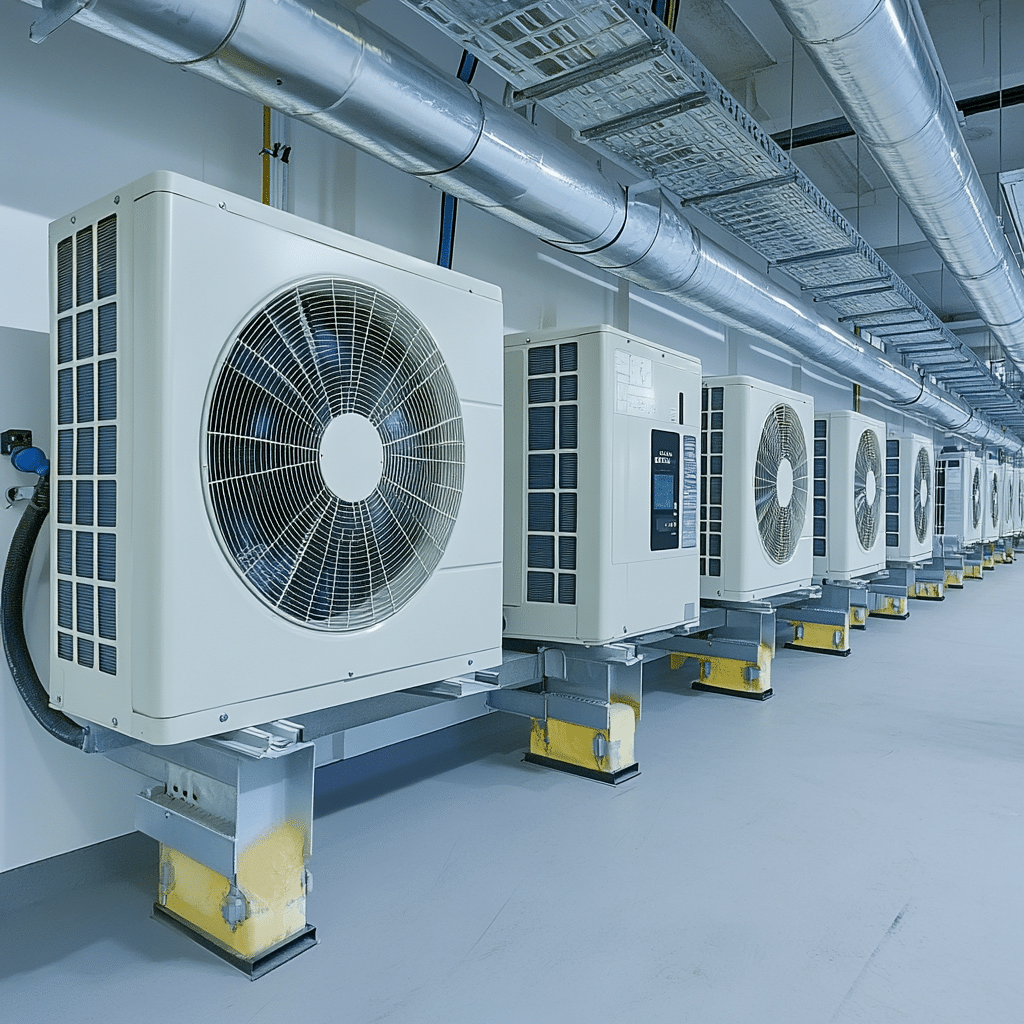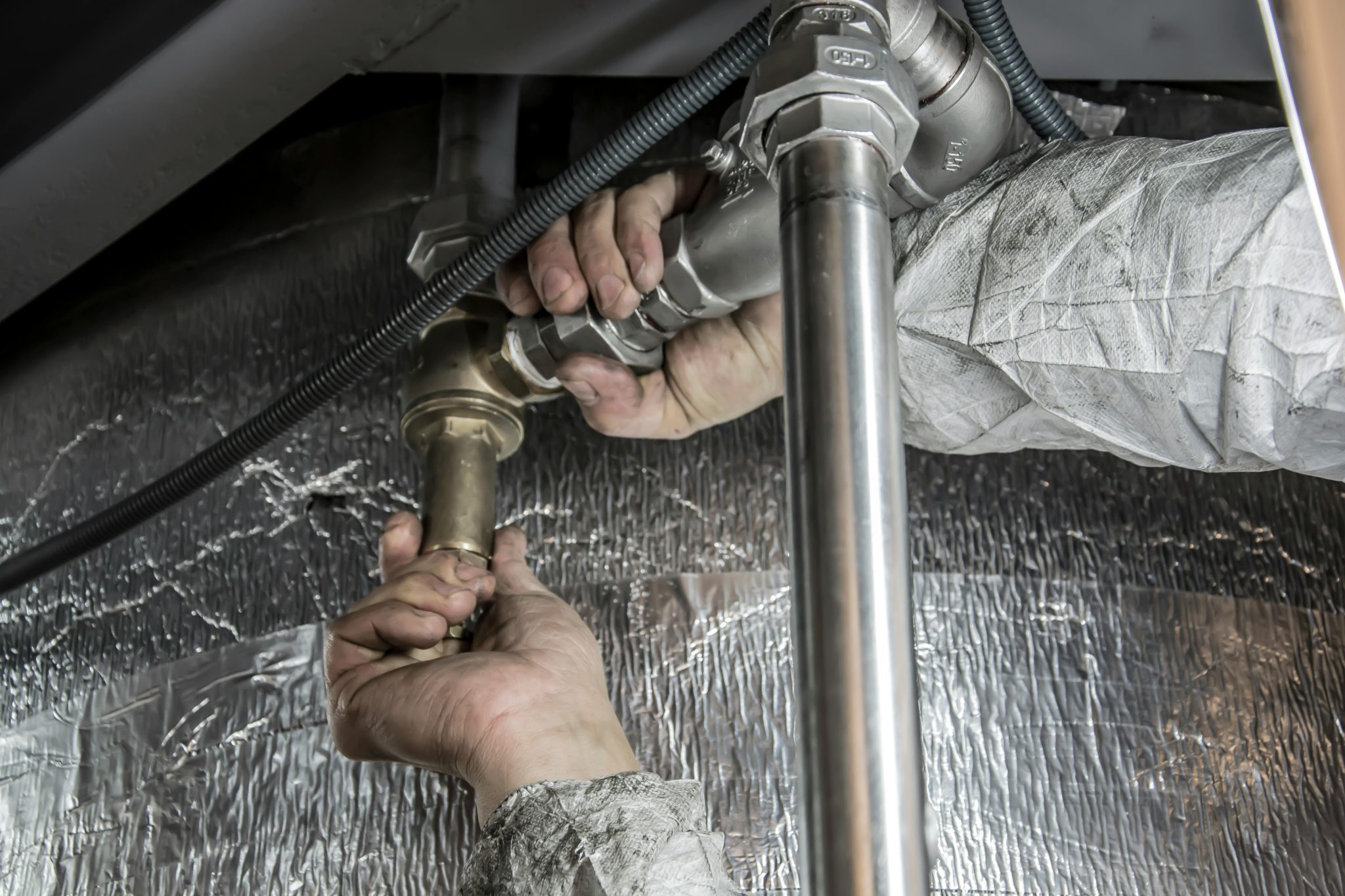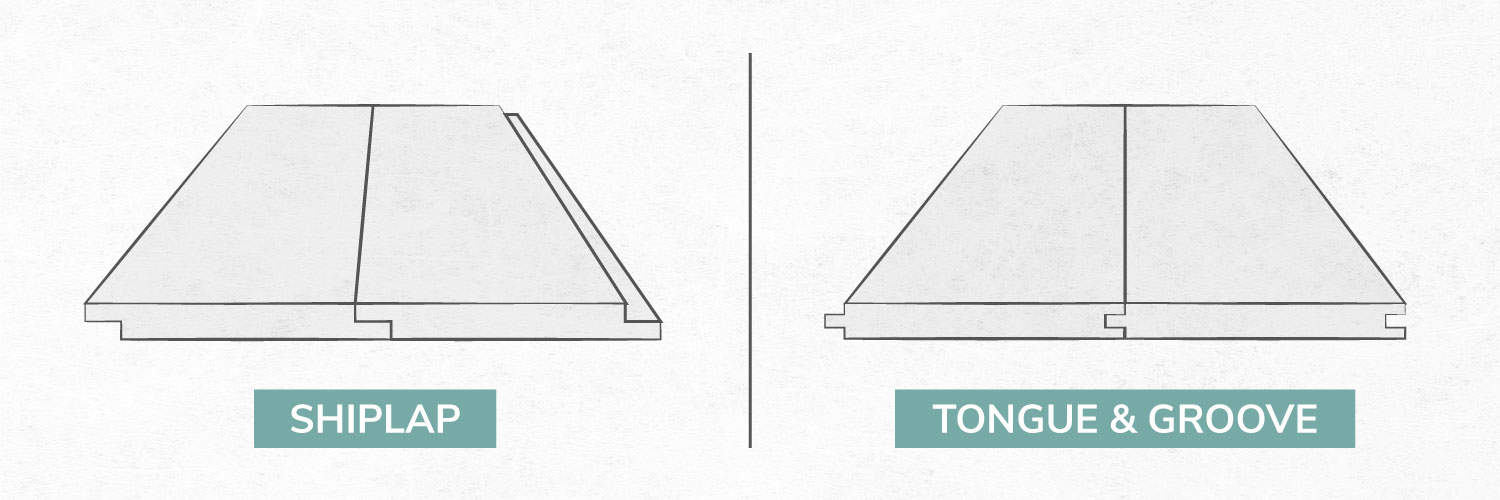Air Conditioning Maintenance Made Easy: Prevent Costly Breakdowns
A simple thermostat adjustment of 7 to 10 degrees while you’re away can reduce your AC maintenance costs by 10%.
Saving money on cooling goes beyond temperature settings. When you skip regular maintenance, your AC unit becomes an expensive burden instead of a comfort provider. Poor maintenance leads to worse performance and higher energy bills.
Furthermore, dirty air conditioners become breeding grounds for mould, which can trigger allergies and asthma symptoms.
Air conditioning in Brisbane experts, BG Electrical & Aircon, suggests two maintenance visits each year: one in spring before the cooling season starts and another in fall before heating season begins.
Your AC’s efficient operation matters, and you shouldn’t let repairs get pricey. This article covers everything related to maintenance, from simple DIY tasks to professional service needs. These steps will help your unit perform better and last longer.
DIY Air Conditioner Maintenance Basics
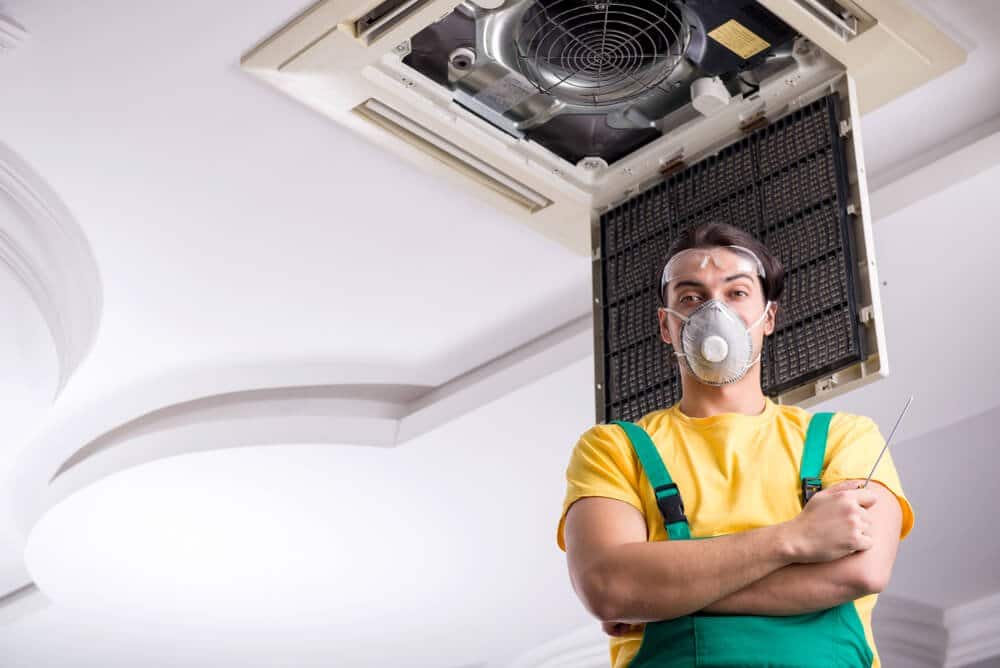
Your air conditioning system needs regular maintenance to run efficiently. Here are some basic DIY tasks that can help you avoid getting pricey repairs.
Filter Maintenance and Replacement
Clean filters are vital for the best system performance. Dirty filters make your blower motor work harder and reduce its lifespan. You should check and replace air filters every 30 to 90 days, but homes with pets or high dust levels need more frequent changes.
- Turn off system power
- Locate and remove the filter
- Inspect for excessive buildup
- Clean reusable filters or replace disposable ones
- Ensure proper filter orientation when reinstalling
Cleaning Condenser Coils
Dirty condenser coils greatly affect your system’s efficiency. A clean condenser maintains proper airflow and heat transfer. Here’s how to clean the outdoor unit:
- Clear debris and vegetation within two feet of the unit
- Use a gentle water spray to clean from the inside out
- Apply specialized coil cleaner for stubborn dirt
- Make sure water drains properly after cleaning
Checking Refrigerant Levels
Low refrigerant levels usually point to deeper problems. Your system might need a refrigerant check if warm air blows from vents or ice builds up on the evaporator coil. A properly charged system maintains efficiency and prevents extra wear on components.
Stay safe around electrical components and get professional help for complex tasks. Regular DIY maintenance combined with professional inspections can improve your system’s lifespan and efficiency.
Professional Maintenance Requirements
Professional expertise helps your cooling system last longer. An unserviced AC unit loses 5% efficiency every year. Regular professional maintenance is a smart investment.
Annual Inspection Checklist
Our inspection process goes beyond simple maintenance and has all the essential checks. Here’s what our team looks at during a professional service:
- Refrigerant pressure testing and leak detection
- Electrical connection tightening and safety verification
- Condensate drain cleaning and flow verification
- Thermostat calibration and programming
- Compressor performance evaluation
Technical Service Components
Professional maintenance requires specialized equipment and expertise. Technicians use multi-port testing equipment to check system performance and examine refrigerant levels, which affect system efficiency and performance.
Certification and Safety Considerations
The EPA requires technicians who handle refrigerants to have proper certification. These certifications fall into four categories:
- Type I: For servicing small appliances
- Type II: For high-pressure systems
- Type III: For low-pressure systems
- Universal: For all types of equipment
Our technicians keep their certifications current and follow strict safety protocols. Safe handling of refrigerants is vital because poor service can damage both your system and the environment.
Optimizing AC Efficiency Through Maintenance
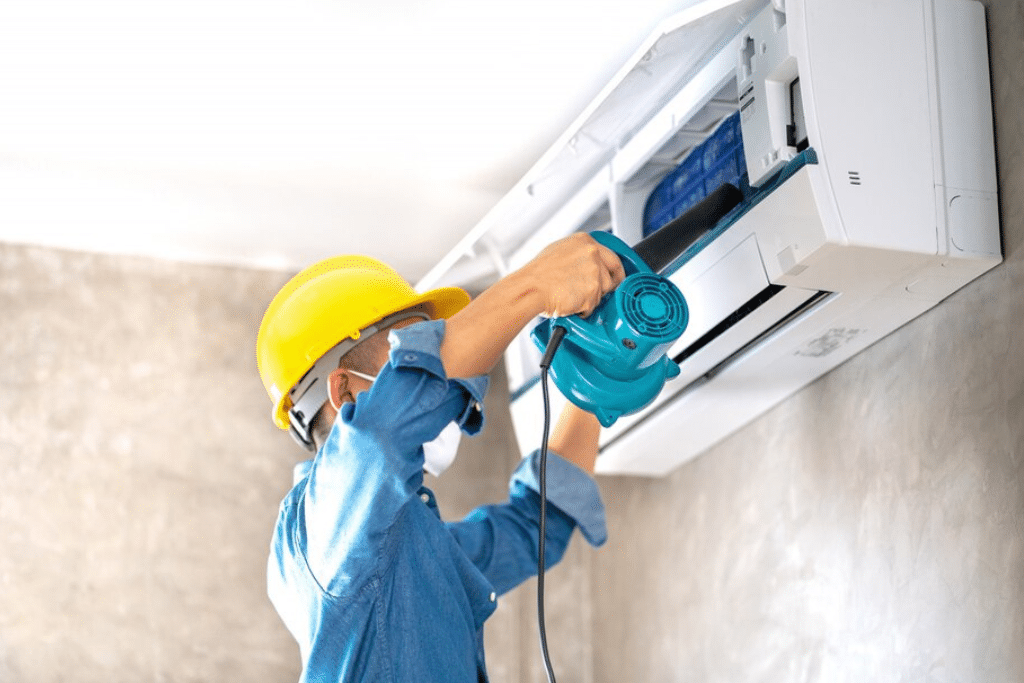
Smart optimization of your air conditioning system can lead to substantial energy savings. Research shows that replacing a clogged air filter with a clean one reduces your AC’s energy consumption by 5% to 15%.
Airflow Management Tips
Your AC’s optimal performance depends on proper airflow. Your outdoor unit needs at least 24 inches of clear space around it. All supply and return registers should remain unblocked to maintain consistent airflow throughout your home.
Temperature Control Strategies
These proven temperature management steps will help you save energy:
- Set your programmable thermostat between 75-78°F during occupied hours
- Increase the temperature by 7°F when away from home
- Use “auto” mode for the fan setting instead of “on”
- Implement sleep mode settings for nighttime comfort
Energy Conservation Methods
You can maximize efficiency with these energy-saving techniques:
- Install window coverings to block direct sunlight
- Use ceiling fans to boost cooling distribution
- Schedule cooling cycles around peak usage times
- Monitor humidity levels to optimize comfort
These optimization strategies can reduce your central air conditioner’s energy consumption by up to 2,000 kilowatt-hours annually. However, consistent system maintenance and smart operation practices are essential to maintaining these savings.
Troubleshooting Common AC Issues
Air conditioning systems show several signs of trouble. Let’s examine how to spot and fix these issues.
Identifying Problem Sources
You might notice these warning signs:
- Strange noises coming from the system
- Vents blowing warm air
- Your system never shuts off
- Energy bills shooting up
- Ice forming on refrigerant lines
Quick Fix Solutions
Based on our experience, here are the steps you should take:
- Check electrical connections
- Look at your circuit breakers
- Make sure the thermostat works
- Check if fuses are intact
- Monitor refrigerant levels
- Watch for ice buildup
- Spot any leaks
- Test the cooling output
Most air conditioning problems are caused by a faulty electrical system. To troubleshoot, start by checking fuses, wires, and electrical parts.
Preventive Measures
Running your AC in defrost mode for 10-15 minutes each week helps reduce moisture buildup. This simple step will keep mold and mildew from growing in your system.
Clean filters are vital—you need to replace them every 12,000 to 15,000 miles or according to your manufacturer’s schedule. Caution: If you notice refrigerant leaks, do not attempt repairs yourself, as this requires professional certification.
To prevent common problems, clean interior components and flush the drain line regularly with a bleach-water solution.If you schedule yearly maintenance with certified technicians, your system will work at its best throughout the cooling season
Maximizing Your AC Investment
Smart investment in air conditioning maintenance can extend your system’s lifespan to 15-20 years. Proper maintenance protects your investment and delivers substantial returns through reduced energy costs.
A well-maintained AC system saves up to 30% on your annual energy bills. These savings come from several key benefits:
- Boosted system efficiency
- Reduced repair frequency
- Lower monthly utility costs
- Extended equipment lifespan
- Improved indoor air quality
The manufacturer’s warranty coverage needs proof of regular maintenance. Without doubt, professional servicing helps protect your investment.
These proven maintenance practices work best:
- Schedule bi-annual professional inspections
- Keep detailed maintenance records
- Monitor system performance regularly
- Address minor issues promptly
- Maintain clean surroundings around outdoor units
Proper maintenance protocols help reduce your AC’s energy consumption by up to 15%. Regular filter changes and coil cleaning play a vital role in maintaining peak performance.
The cost of routine maintenance seems minimal when compared to major repairs or early system replacement. Our experience shows that professional air conditioning maintenance today helps avoid emergency services that can get pricey later.
A properly maintained system runs more efficiently and provides better temperature control with improved air quality. Regular care and attention help maximize both the performance and longevity of your cooling system.

